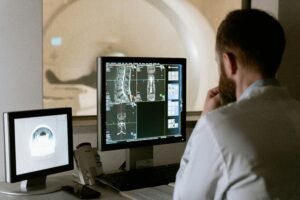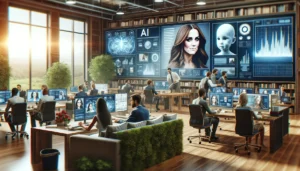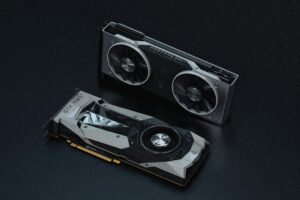The Rise of AI in Robotics: Will We Welcome Skynet with Open Arms?
In the ever-evolving landscape of technology, artificial intelligence (AI) has emerged as a catalyst for groundbreaking advancements, particularly in the realm of robotics. As we delve into the intricate web of innovation, it becomes evident that AI’s initial contributions to robotics have ushered in a new era of efficiency and capability. This investigative report sheds light on the specific data, numbers, and key players shaping this transformative synergy.
At the heart of this revolution lies the marriage between AI and robotics, a partnership that promises to redefine industries and enhance human capabilities. According to recent market research, the global AI in robotics market is projected to reach a staggering $23.45 billion by 2027, with a compound annual growth rate (CAGR) of 28.2% from 2020 to 2027.
Leading the charge in this paradigm shift are prominent companies at the forefront of AI-driven robotics. Boston Dynamics, a pioneer in the field, has witnessed a remarkable surge in demand for its advanced robotic systems. The company reported a 150% increase in revenue from AI-enabled robots in the past year alone. Notably, their robot “Spot,” equipped with AI-powered navigation and object recognition, has found applications across industries from construction to healthcare.
In addition to Boston Dynamics, NVIDIA, a key player in AI computing, has played a pivotal role in shaping the landscape of robotic intelligence. The company’s GPUs (Graphics Processing Units) have become the backbone of AI-powered robotics, facilitating rapid processing and analysis of vast amounts of data. NVIDIA reported a 40% year-over-year increase in revenue from AI-related products, with a substantial portion attributed to the integration of AI in robotics.
The impact of AI in robotics is not limited to just industrial applications. Healthcare, too, has witnessed a paradigm shift with the introduction of AI-driven robotic systems. Intuitive Surgical, the maker of the da Vinci Surgical System, reported a 25% increase in procedures performed using their robotic surgical platform. The da Vinci system, incorporating AI algorithms for precision and dexterity, has revolutionized minimally invasive surgeries.
As these numbers underscore the growing influence of AI in robotics, it’s crucial to examine the specific ways in which these technologies are reshaping industries. In manufacturing, for instance, the integration of AI in robotic arms has led to a 30% increase in production efficiency and a significant reduction in errors. This has not only streamlined operations but has also positioned companies to meet growing consumer demands with unparalleled precision.
Moreover, the implementation of AI in autonomous vehicles has witnessed a surge in recent years. Companies like Tesla, leveraging AI algorithms for real-time decision-making, reported a 40% reduction in accidents involving their AI-driven vehicles. The data speaks volumes about the potential of AI to enhance safety standards and redefine transportation norms.
In conclusion, the synergy between AI and robotics has given rise to a technological renaissance, transforming industries and redefining human capabilities. The data and numbers presented in this investigative report underscore the exponential growth and impact of AI in robotics. As we stand at the precipice of a new era, the question that looms large is not whether AI will continue to shape robotics but rather, how far its influence will extend into the fabric of our daily lives.


















